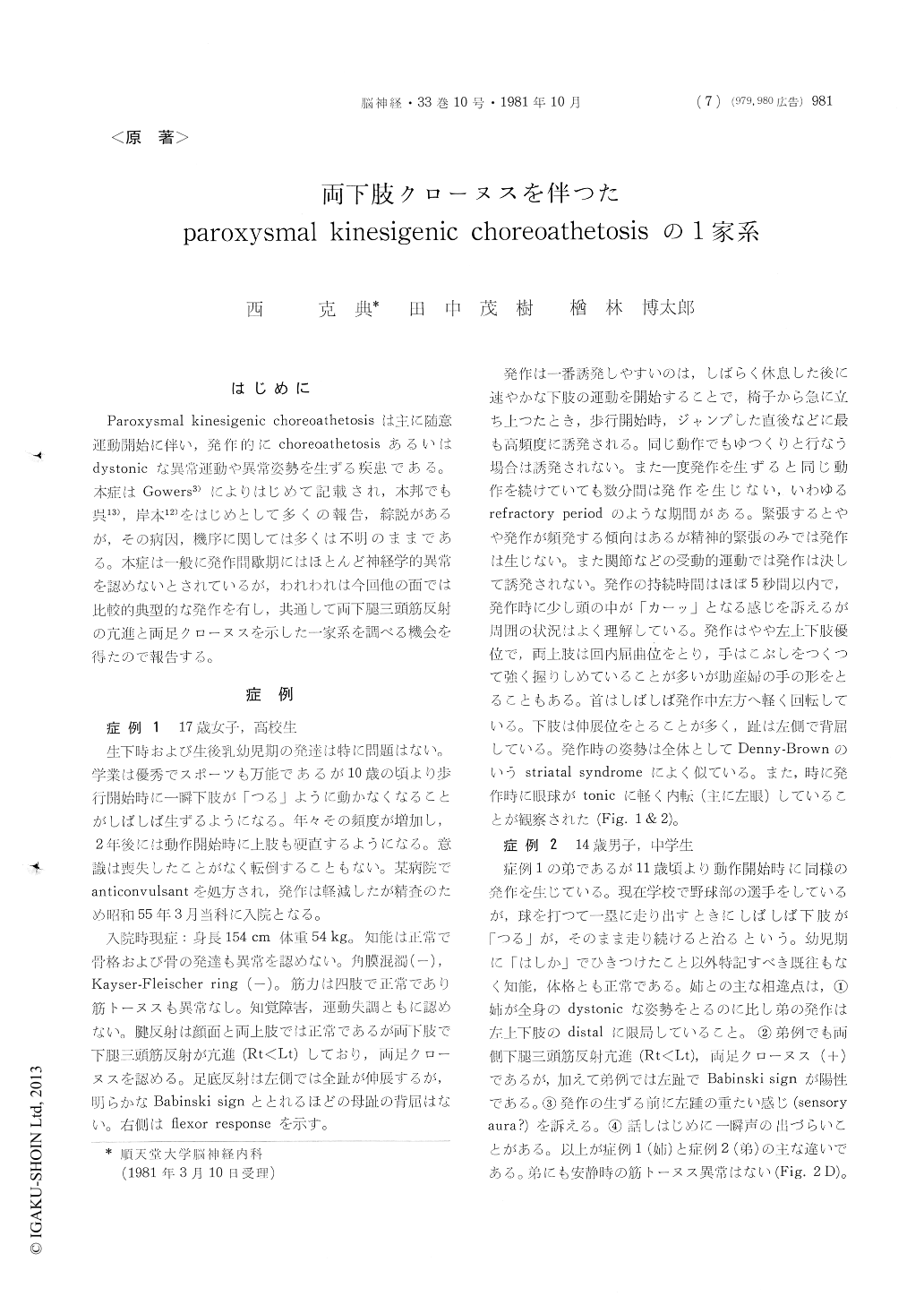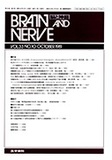Japanese
English
- 有料閲覧
- Abstract 文献概要
- 1ページ目 Look Inside
はじめに
Paroxysmal kinesigenic choreoathetosisは主に随意運動開始に伴い,発作的にchoreoathetosisあるいはdystonicな異常運動や異常姿勢を生ずる疾患である。本症はGowers3)によりはじめて記載され,本邦でも呉13),岸本12)をはじめとして多くの報告,綜説があるが,その病因,機序に関しては多くは不明のままである。本症は一般に発作間歇期にはほとんど神経学的異常を認めないとされているが,われわれは今回他の面では比較的典型的な発作を有し,共通して両下腿三頭筋反射の亢進と両足クローヌスを示した一家系を調べる機会を得たので報告する。
Three members in one family of paroxysmal kinesigenic choreoathetosis were reported who had similar neurological abnormalities between attacks.
Case 1. Female, aged 17. From the age of 10 years she had been suffering from dystonic attacks several times a day. The attacks were of short duration, with no consciousness loss, and occured almost exclusively with the rapid initiation of volitional movement. Neurological examination revealed bilateral exaggeration of Achilles tendon reflex (ATR), and bilateral ankle clonus were positive. Plantar response was extensor on the left side, while it was flexor on the right. Muscle tone was normal, and mentally she was an alert intel-ligent girl. Dystonic attacks were slightly more dominant on the left sided extremities and rotation of the head to the left and tonic adduction of the left eye was sometimes seen.
Hematological and endocrinological studies were all within normal range. Electromyography showed normal interference pattern, and sensory evoked potential was also normal. Electroencephalography showed slight abnormalities; after 4min. of hyper-ventilation, diffuse delta bursts appeared. On CT scan, mild dilatation of ventricular system and cortical sulci were observed.
Case 2. Male, aged 14. A younger brother of Case 1 had also been suffering from dystonic attacks since the age of 11 years. His attacks were more restricted on his left distal limbs. Neurological examination revealed bilateral ankle clonus and exaggerated ATR, in addition a Babinski sign was positive on the left side. Electroencephalography showed similar abnormalities as his sister, and CT scan revealed moderate dilatation of ventricular system and widening of cortical sulci.
Case 3. Male, aged 38, Father of Case 1 and Case 2, a taylor. He had episodes of similar attacks in his adolescence until the age of middle twenties, since then, there was no attacks. Neurological examination revealed bilateral ankle clonus and exaggerated ATR. Planter response was flexor and muscle tone was normal.
Paroxysmal kinesigenic choreoathetosis is a disorder characterized by sudden dystonic posture or choreoathetoid movement of extremities, which is induced almost exclusively with the initiation of volitional movement. Etiology is unknown, although the clinical picture is rather well deline-ated. More than 100 cases were reported in Japan, and most of the reports indicated that in familial cases, patients are neurologically free in the interval period between attacks. So this is the first report that one family of this disease had similar neurological abnormalities.
Dysfunction of the pyramidal system in this disease, as well as the extrapyramidal system is strongly suggested.

Copyright © 1981, Igaku-Shoin Ltd. All rights reserved.


